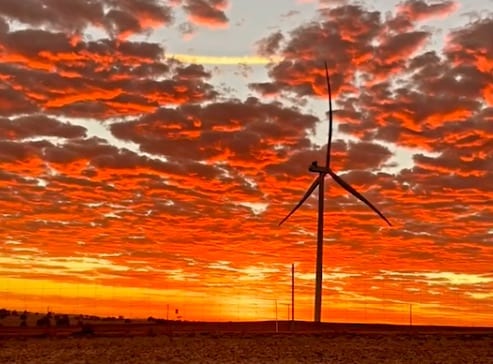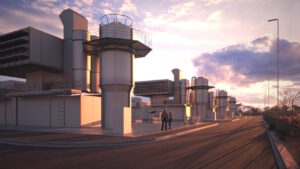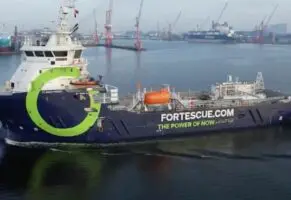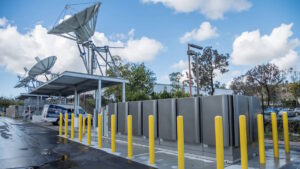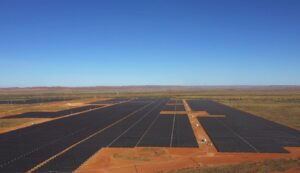A feasibility study conducted on behalf of global oil giant BP has given a technical tick of approval for a massive green hydrogen and green ammonia project in Western Australia that would require more than four gigawatts of wind and solar capacity.
BP has identified the area around Geraldton, north of Perth, as one of its key target areas for renewable hydrogen thanks to its “vast wind and solar” resource, and its access to land and ports.
The feasibility study, conducted by GHD and co-funded by the Australian Renewable Energy Agency, looks at an initial 34.5MW demonstration project with a view to ramping up to a 2,000MW electrolyser facility that would require at least 2GW each of wind and solar to supply.
“The study finds production of green hydrogen and ammonia using renewable energy is technically feasible at scale in Australia,” the report notes, adding that Western Australia is ideally positioned for green hydrogen and green ammonia production.
There is still the question of cost. Electrolyser production costs will need to fall rapidly, and any project of the scale envisaged by BP will also require significant investment in ports, water and electricity networks and distribution.
BP’s plans are just one of a number of huge, and in some cases significantly bigger, green hydrogen and green ammonia projects being considered for Western Australia.
Two of them – a 50GW project north of Esperance, and a 26GW project in the Pilbara – are being led by CWP and Intercontinental, while Andrew Forrest’s Fortescue Future Industries is looking at a number of proposals at a similar scale, and numerous smaller projects are also in the pipeline.
The WA government has set a notional target of 100GW of green hydrogen and ammonia capacity, as early as 2030, in its efforts to try and seize a “first mover” advantage in what is expected to be a rapid and massive transition from fossil fuels such as LNG to zero emissions alternatives.
The study notes that green hydrogen is produced from the electrolysis of water, using renewable energy, and can be used as a fuel and energy source in hard-to-decarbonise industries, such as steel.
Green ammonia, where much of the new project activity is also focused, is produced by combining green hydrogen and nitrogen (from the air). Green ammonia can be utilised as a hydrogen carrier, providing advantages over transporting pure hydrogen.
Frédéric Baudry, president, bp Australia and SVP fuels & low carbon solutions, Asia Pacific, said: “bp is putting its strategy in action by accelerating its position in low carbon technologies and providing end-to-end integrated energy solutions for our customers, including hydrogen.
“This study confirms the potential for scaled-up green hydrogen in Western Australia,” said Frédéric Baudry, the head of bp Australia and of its fuels & low carbon solutions in the Asia Pacific.
“This looks particularly promising in the mid-west of WA, which has existing infrastructure, access to land and abundant renewable energy resources such as wind and solar.
“Importantly, our study also confirmed strong demand from potential customers in the hard-to-abate sectors, and for both local and export markets. This has the potential to position Australia as a regional powerhouse of the energy transition.”
The study examined the hydrogen supply chain and domestic and export markets at two scales: a demonstration/pilot scale (4,000 tonnes of hydrogen making up to 20,000 tonnes of ammonia) and commercial scale (200,000 tonnes of hydrogen making up to 1 million tonnes of ammonia).
It considered three different hydrogen production technologies, and the plant power source was modelled as a mix of solar and wind with some battery support. This renewable power modelling was completed by Lightsource bp (its renewable energy joint venture).
Crucially, the study was not yet ready to make any conclusions on the economic returns.
“For this to be effectively understood the renewable hydrogen and ammonia markets need to be further advanced,” it said, adding that bigger would be better.
“The study found that significant scale will be required for general hydrogen fuel use to be commercially viable.”
The head of GHD’s advisory team, Jason Fonti, said the “magic figure” is producing hydrogen below $2 per kilo and noted that the pathway to getting there is becoming clearer.
It requires low cost wind and solar -via a power purchase agreement – and a scaling up of electrolyser technologies to achieve significant cost reductions there.
“The issue of how to overcome relatively high costs and the need to scale to reduce costs is arguably the largest issue for renewable hydrogen,” the report says. It doesn’t give much away on the likelihood of achieving that by a certain date.
The other challenges are ensuring a port facility is built, and plugging into the main grid in a region which has a notoriously weak connection.
The study notes that the load requirements for the commercial scale plant are about 1370MW, which would require wind and solar capacity of 2000MW each, resulting in a capacity utilitisation of around 77% for the electrolyser. A high percentage is critical for managing costs.
“A firm capacity factor should be defined later in the project so that the downstream equipment can be ‘right-sized’. Optimising renewable power generation against plant utilisation will be key in managing costs,:” it says.

